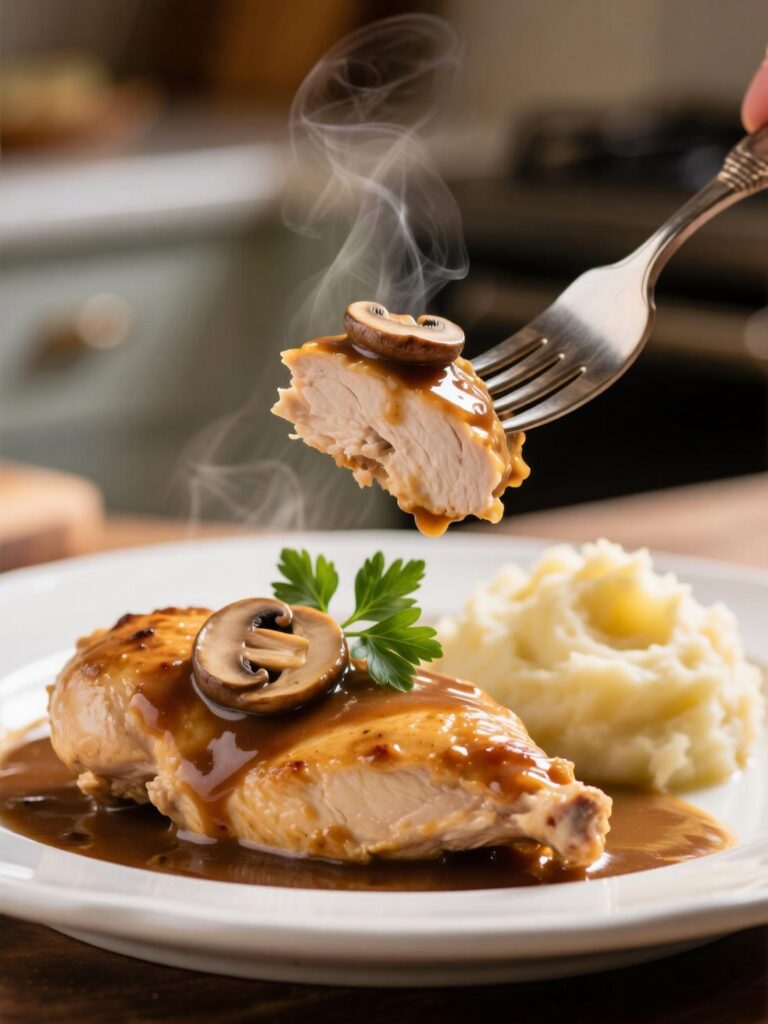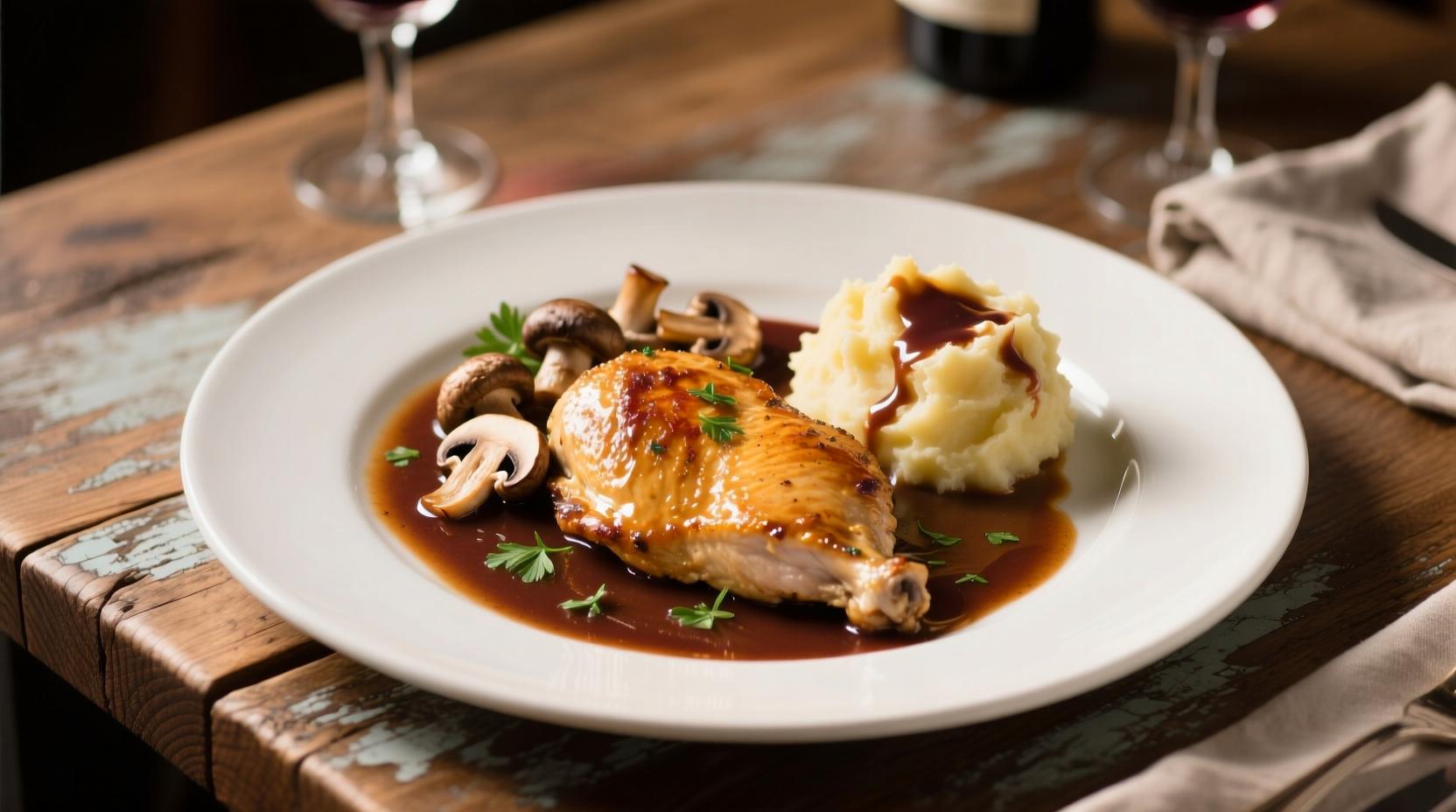Chicken Marsala is one of those dishes that seems deceptively simple until you try to make it sing. Many cooks think it’s just chicken, mushrooms, and wine sauce. But a great Chicken Marsala—one that makes someone stop mid-bite—has more going on than a recipe card can tell you. It’s about timing, the right wine, and a bit of restraint with the pan. Let’s break down why this dish works, how to do it justice, and where most people quietly mess it up without realizing.
Understanding the Soul of Chicken Marsala
The name comes from Marsala wine, a fortified Sicilian wine that’s been produced for over 200 years. Authentic Marsala has depth, caramel notes, and just enough acidity to cut through the richness of chicken and butter. Using it is non-negotiable if you want the real deal. Don’t even think about swapping in random sweet sherry unless you want something kinda similar but definitely not Marsala.
It’s traditionally made with veal in Italy (Scaloppine al Marsala), but in the US, chicken became the star—likely because it’s cheaper and more available. The transformation stuck. The dish now lives in a strange but delicious space between Italian rustic cooking and American restaurant comfort food.
The Wine: Why It Matters More Than You Think
Professional kitchens know Marsala is not just “sweet wine.” There are three main types—dry, semi-dry, and sweet. Dry Marsala works best for savory dishes like this. Sweet Marsala? That’s for desserts like zabaglione.
Cheap Marsala from a grocery store shelf, dusty and forgotten, will taste flat and one-dimensional. Good Marsala has a complexity that actually changes the way your sauce reduces. It develops layers—hazelnut, dried fruit, and almost toffee-like aromas. A 2018 study by the Sicilian Wine Institute even found that older, barrel-aged Marsala retains more phenolic compounds, which translates to richer flavor in cooking.
Chicken: The Technique Makes the Meat
Chicken breasts are the most common choice, but most chefs prefer boneless thighs for flavor. However, if you want the traditional American restaurant-style texture, go with chicken breast pounded thin. Thin cutlets cook evenly, sear beautifully, and don’t turn rubbery in the sauce.
Here’s where most home cooks mess up—they overcrowd the pan. The moment your chicken starts steaming instead of searing, you lose that golden crust that makes the sauce cling better. In a professional setting, the chicken gets cooked in batches, then held aside while the sauce is built.
Mushrooms: Don’t Skip the Browning
White button mushrooms work fine, but cremini or even wild mushrooms like chanterelles take the dish into fine-dining territory. The secret is patience. If your mushrooms release too much water and you stir them too early, they’ll stew instead of brown.
High heat, a bit of oil, and no crowding—this is mushroom law. Let them sit untouched for the first couple of minutes. That deep brown color you get? That’s not just pretty. It’s umami gold that makes the Marsala sauce taste almost twice as rich.

Building the Sauce: It’s All About Emulsion
Marsala sauce is deceptively simple—wine, stock, and sometimes cream. The challenge is getting it to thicken naturally without breaking. Professionals use the fond (the brown bits left after searing) as a flavor base. Deglazing with Marsala lifts that fond right into the sauce.
Here’s an insider move: reduce the Marsala until it’s almost syrupy before adding stock. This concentrates the wine flavor instead of diluting it. If you add cream, do it last, and keep the heat low—boiling cream in a wine-based sauce can split it into a sad, grainy mess.
Balancing Flavors: Sweet, Savory, and Acid
A great Chicken Marsala balances the slight sweetness of the wine with savory chicken stock and just a hint of acidity. If your sauce feels heavy, a splash of lemon juice at the end will sharpen everything up. But don’t overdo it—you’re not making lemon chicken.
Professional chefs often taste and adjust seasoning three or four times during the process. Salt early in the sauce stage to help flavors meld, then a final adjustment right before serving. Black pepper is traditional, but a tiny pinch of white pepper can add warmth without overpowering.
Step-by-Step Professional Method
- Prep chicken – Pound chicken breasts to ¼ inch thickness. Season with salt and pepper. Dredge lightly in flour for better browning.
- Sear – Heat oil and butter in a heavy pan. Sear chicken in batches until golden brown, about 3 minutes per side. Remove and set aside.
- Cook mushrooms – Add more butter if needed. Sauté mushrooms over medium-high heat until deep golden brown. Don’t stir too much.
- Deglaze – Add Marsala wine. Scrape up fond. Let it reduce by half.
- Add stock – Pour in chicken stock and simmer until slightly thickened.
- Finish – Return chicken to the pan. Simmer gently for 2–3 minutes. Optional: stir in a splash of cream.
- Serve – Garnish with parsley. Serve hot, ideally over fresh pasta or mashed potatoes.
Common Mistakes (and How to Dodge Them)
Using sweet Marsala – Your sauce will taste like dessert. Use dry.
Rushing the reduction – You’ll end up with watery sauce lacking depth.
Skipping the mushroom browning – The difference is night and day.
Adding cream too soon – Leads to splitting and sad texture.
The Professional Twist
In some high-end kitchens, Chicken Marsala gets a little extra help from demi-glace. This concentrated stock gives the sauce a luxurious body and gloss. Another pro move? Finishing the sauce with a cold butter whisk-in (monter au beurre) right before plating. This gives a silky texture and helps the sauce cling to the chicken like it’s supposed to.
You can also swap half the mushrooms for roasted shallots or pearl onions for an extra layer of flavor. A sprinkle of fresh thyme leaves can also bring a subtle herbal lift.
Pairing and Presentation
This dish plays well with creamy mashed potatoes, buttered egg noodles, or fresh tagliatelle. For wine pairing, you can’t go wrong with a dry Italian white like Verdicchio or even a lighter red like Pinot Noir.
Presentation matters. Don’t drown the chicken in sauce—spoon just enough over and around it to glisten. Leave space on the plate. Sprinkle fresh herbs for color. The best restaurant plates always have restraint.
Nutritional and Culinary Notes
One portion of traditional Chicken Marsala (without cream) averages around 400–450 calories. Adding cream bumps it to 500+. While not the lightest dish, it’s protein-rich and satisfies without heavy carbs if paired with vegetables.
Culinary trend-wise, some modern chefs are lightening the dish with cauliflower purée instead of potatoes and using organic, free-range chicken for better texture and flavor.

Final Thoughts
Chicken Marsala is proof that simple ingredients, treated with care, can produce extraordinary flavor. It’s not just a “weekday dinner”—it’s a lesson in balance, patience, and technique.
For professionals, it’s a dish that tests timing and flavor control. For home cooks, it’s a gateway to more advanced sauce work. Either way, the joy is the same: that first bite where wine, mushrooms, and chicken all speak the same language.
If you want to master it, remember—don’t rush the wine, respect the mushrooms, and let the sauce tell you when it’s ready, not the clock.
FAQs
What type of Marsala wine is best for Chicken Marsala?
Dry Marsala wine is ideal for savory dishes like Chicken Marsala.
Can I substitute Marsala wine with something else?
You can use dry sherry, but it won’t taste exactly the same.
Should I use chicken breast or thighs?
Thinly pounded chicken breasts give the classic texture, though thighs have more flavor.
Why is my Chicken Marsala sauce watery?
You likely didn’t reduce the wine enough before adding stock.
Do I have to use cream in the sauce?
No, cream is optional and adds richness but not tradition.
How do I keep my mushrooms from getting soggy?
Cook them in batches over high heat without stirring too soon.
Can I make Chicken Marsala ahead of time?
Yes, but it’s best eaten fresh as the sauce can thicken when stored.
What side dishes go best with Chicken Marsala?
Mashed potatoes, pasta, or buttered noodles work perfectly.
Can Chicken Marsala be made gluten-free?
Yes, just dredge chicken in cornstarch instead of flour.
Is Chicken Marsala an Italian dish?
It originates from Italian cooking but is more common in Italian-American cuisine.

Mariana is a passionate home cook who creates delicious, easy-to-follow recipes for busy people. From energizing breakfasts to satisfying dinners and indulgent desserts, her dishes are designed to fuel both your body and hustle.
When she’s not in the kitchen, she’s exploring new flavors and dreaming up her next recipe to share with the Foodie Hustle community.

